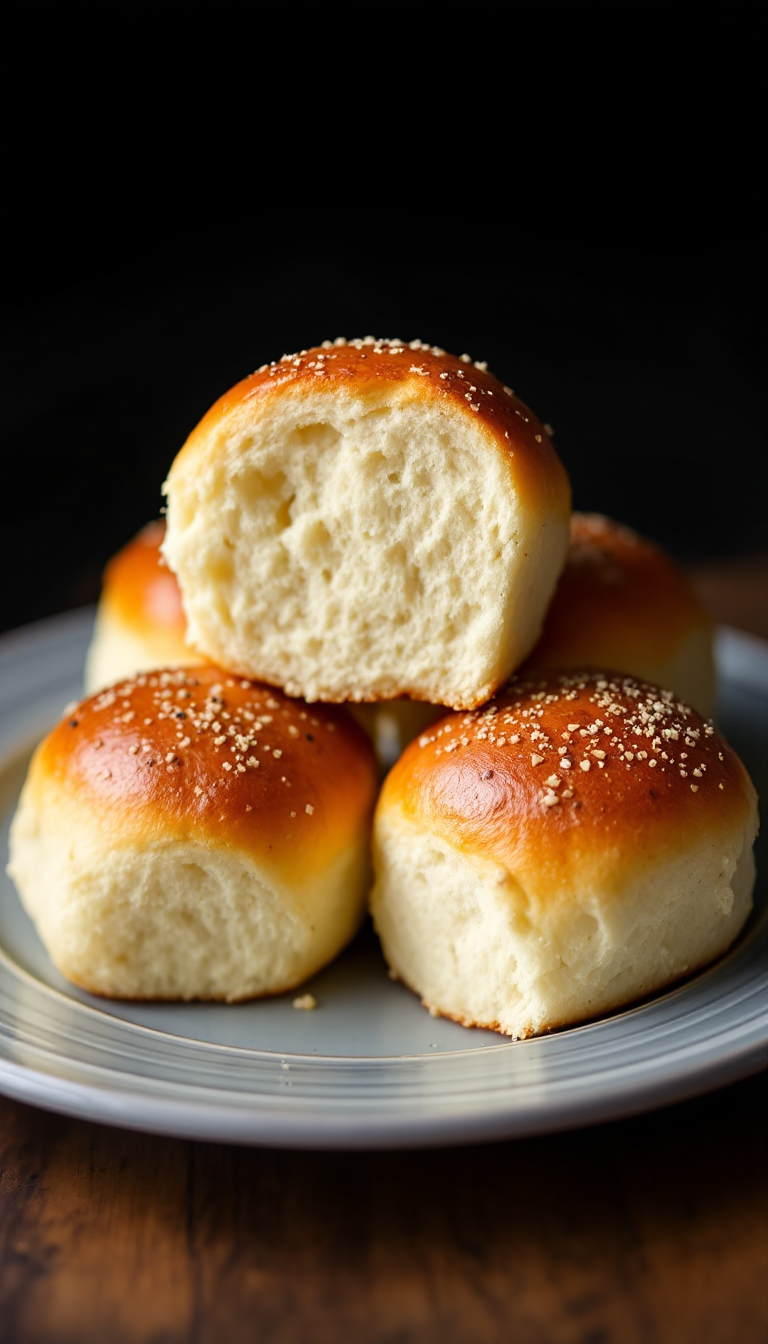Dinner rolls are a staple that bring warmth and comfort to any meal. These dairy-free rolls are soft, fluffy, and easy to make, ensuring everyone can enjoy them. Whether you’re hosting a family dinner or simply craving fresh bread, this recipe is a perfect addition to your table. Let’s get baking!
Steps
- Combine yeast, sugar, and warm water in a stand mixer bowl and let it sit for 5 to 10 minutes until it becomes foamy.
- Add the egg, oil, salt, and 3 cups of flour to the yeast mixture and knead until the dough is smooth and slightly sticky, adding more flour if necessary.
- Cover the dough with a damp towel and allow it to rise in a warm area for about an hour or until it has doubled in size.
- Grease a 9×13-inch baking pan or two 9-inch round/square pans, then punch down the dough on a floured surface and divide it into 14 to 16 pieces.
- Shape each piece into a ball by rolling it under your cupped hand, then place them in the prepared pan.
- Let the shaped dough rise for another hour or until it has doubled in size.
- Preheat the oven to 350°F (175°C), and once fully heated, bake the rolls for 20 minutes or until they start to brown slightly.
- Remove from the oven, brush the tops with oil or vegan butter, and let the rolls sit for 5 minutes before transferring them to a cooling rack.
Ingredients
- free dinner rolls:
- 1 ½ teaspoons instant yeast
- 2 tablespoons granulated sugar
- 1 cup warm water (235 milliliters)
- 1 egg
- 2 tablespoons oil (such as canola or vegetable oil)
- 1 teaspoon salt
- 3 to 3 ½ cups all-purpose flour (385 to 450 grams)
Nutritional Values
Calories: 3260 | Total Fat: 48g | Saturated Fat: 0g | Trans Fat: 0g | Unsaturated Fat: 32g | Cholesterol: 192mg | Sodium: 2224mg | Carbohydrates: 1024g | Fiber: 32g | Sugar: 32g | Protein: 144g
FAQ
- Can I substitute whole wheat flour for all-purpose flour in this recipe?
- Yes, you can substitute whole wheat flour for up to half of the all-purpose flour. This will add a denser texture to the rolls.
- What is the best way to activate yeast for baking?
- To activate yeast, mix it with warm water (about 110°F or 43°C) and a small amount of sugar. Wait for it to become frothy, indicating it’s active.
- How should I store my yeast to keep it fresh?
- Store yeast in an airtight container in a cool, dry place. For extended shelf life, keep it in the freezer.
- What should I do if my dough doesn’t rise as expected?
- Ensure the yeast was properly activated. If the dough is still not rising, it may be due to a cooler environment. Try placing it in a slightly warmed oven (turned off) to encourage rising.
- Can I freeze the dough for later use?
- Yes, you can freeze the dough in an airtight container for up to four weeks. Thaw it in the refrigerator overnight before using, and allow extra time for it to rise.
- What could cause my dinner rolls to turn out dense and heavy?
- Dense rolls can result from over-kneading, insufficient rising time, overproofing, or using too much flour. Adjusting these factors can improve the texture.
Tips
- Blooming Yeast: Even though instant yeast doesn’t require blooming, doing so can confirm its activity, preventing potential rising issues. Mix the yeast with warm water and sugar until frothy before proceeding.
- Flour Substitution: For a softer texture, replace a quarter cup of flour with cornstarch. This modification helps the rolls remain tender and fresh for several days.
- Shaping Dough: To achieve evenly shaped rolls, cup your hand over each dough piece and roll it in a circular motion on the table. This technique helps form perfect dough balls for consistent baking.
- Warm Rising Environment: To expedite the rising process, preheat your oven to its lowest temperature, then turn it off. Place the dough inside, covered with a damp towel. This creates a warm environment that encourages quicker rising.
Equipment
- Stand Mixer
- Rubber Spatula
- Baking Pan (9×13-inch or two 9-inch round or square pans)


